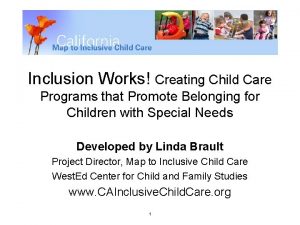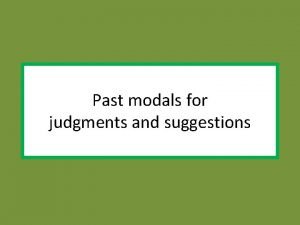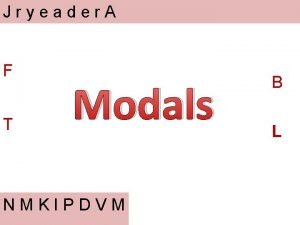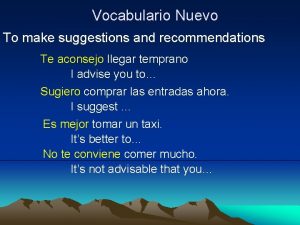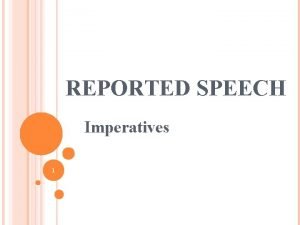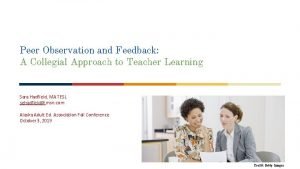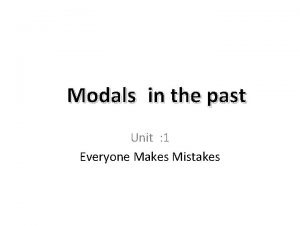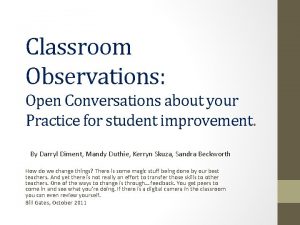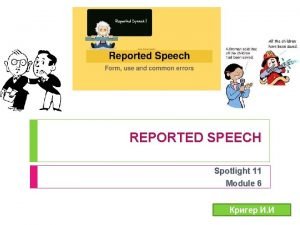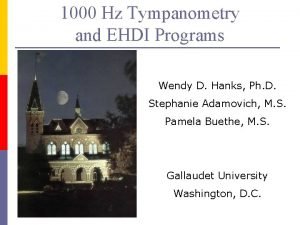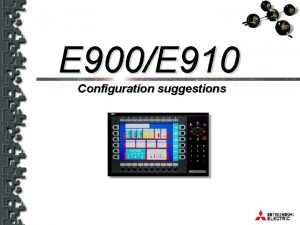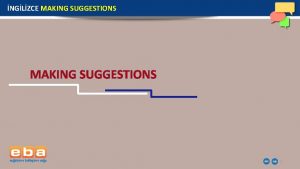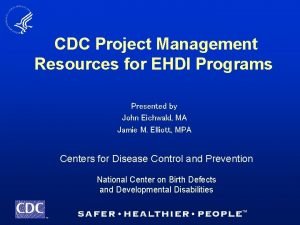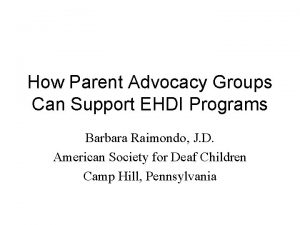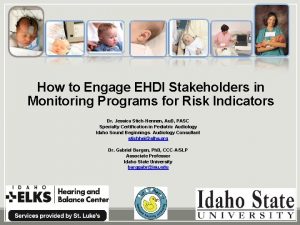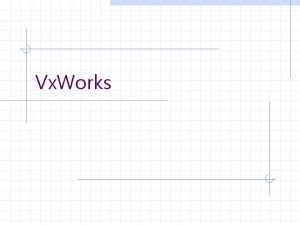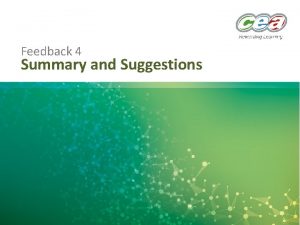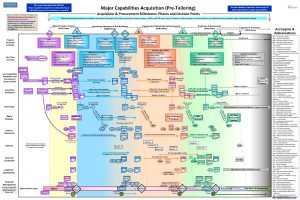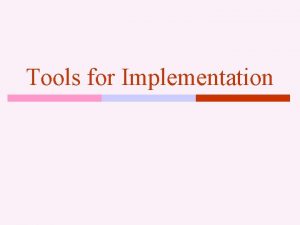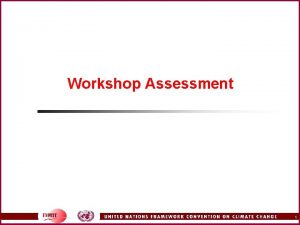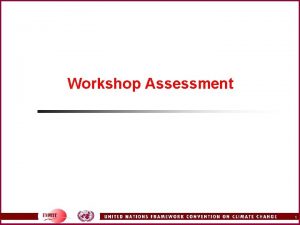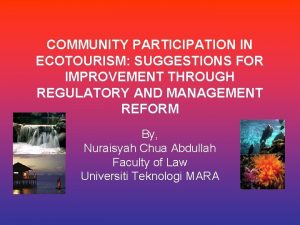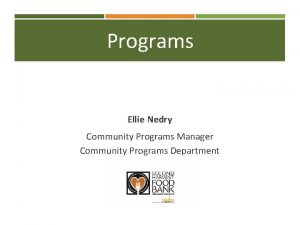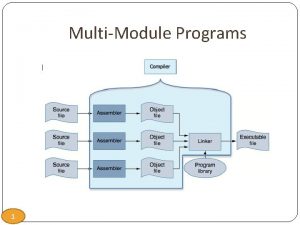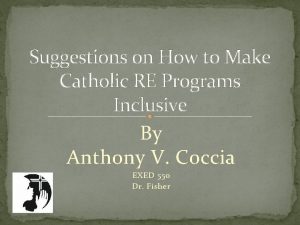EHDI Programs What Works and Suggestions for Improvement




























































- Slides: 60

EHDI Programs: What Works and Suggestions for Improvement Robert F. Oyler 1 Elizabeth A. Black 2 Michelle Harmon 1 1. Mississippi University for Women 2. Sunbelt Staffing Solutions

Acknowledgements Financial support was provided (in part) by Early Hearing Detection and Intervention – Mississippi (MCH Grant Project 1 H 61 MC 00053 01) Technical support and advice was provided by Faye Mc. Collister (Educational Audiologist, NCHAM) and by Anne Oyler(Audiology Consultant, EHDI-M).

Background • As specified in the MCH grant, EHDI-M was to conduct 2 capacity studies: – The first was to determine the state’s capacity to serve their infants and toddlers with impaired hearing (completed in 2003). – The second was to compare the efficacy of Mississippi with that of other states. We will report the results of that study today.

Methods • A group of individuals with relevant expertise was assembled to identify specific areas of interest and to develop a survey instrument. • In the survey, we asked for data from calendar year 2002.

• A decision was made to send the survey to those individuals identified as being in charge of hearing screening programs in the 2003 DSHPSHWA Directory. • After several revisions, a draft survey was sent to the EHDI Directors in four states for review and comment (August 2003).

• Following receipt and review of these surveys, minor revisions were made and the final survey was mailed (November 2003). – An email reminder was sent (December). – Another email message with an electronic copy of the survey was sent (February ’ 04). – At 2004 EHDI Conference, some of group solicited participation.

Results • As of mid-March 2004, 28 completed surveys had been returned. – Return rate = 56% – Good geographic representation (although we did not receive responses from the “big” states like CA, NY, & TX).

U. S. Census Bureau divisions • South: AL, FL, GA, KY, LA, MD, MS, NC, OK, TN, & VA (n=11) • Northeast: CT, PA, & RI (n=3) • Midwest: IN, KS, MI, MN, MO, & ND (n=6) • West: AK, AZ, CO, NV, NM, OR, UT, & WY (n=8)

General findings • All responding states had UNHS program. – 20 responding states (71%) had mandates for programs. – Of those states with mandates for UNHS, 15 of the mandates (75%) required reporting, but only 5 of the mandates (25%) included funding.

• Among all respondents, the mean percentage of infants screened was reported to be 93. 26%. – Only 20 of the respondents (71%) could report the number of these infants who were identified as having hearing loss. • Only about 2/3 of this group (n=13, or 65%) could report type of hearing loss (conductive, sensorineural, or mixed).

• Overall, fewer than half (46%) of the responding states could report the number of hearing losses identified in 2002 by type and degree.

• Looking at this data from a different perspective--– If we accept the incidence of profound S/N HL as 1/1000 live births, and – If we define “adequate identification” as reporting that proportion of children relative to census data…

• Then: – The majority (73%) of states which had mandated programs were adequately identifying children with profound HL; and, – The majority (80%) of states which did not have mandated programs were not adequately identifying children with profound HL.

Thus, one thing that works… … is a mandate for the EHDI program, especially if that mandate includes a requirement for reporting.

It might be made better… …by attaching money to the requirement for reporting.

Consider this… • 96% of the responding states had a data management system for screening – and virtually all were readily able to provide data re: number of babies born, number of screening hospitals, percentage of infants screened, & referral rates…

• When asked how many infants were identified with hearing loss, the number of respondents dropped to 20 (71%) – This is the exact number of respondents who reported having a state mandate for their program.

• When asked to provide demographic data about types of loss, fewer than half of the respondents could do so. – 55% of the mandates required reporting – Less than 20% of the mandates included funding

As noted (and, in addition): • 96% of the responding programs had a data management system for screening • 78% had a data management system for diagnostics • 68% had a data management system for intervention

This is good!! • Many states have data management systems for some portion of their EHDI program. – 82% have customized computer systems.

And, • 43% of the responding programs reported that their screening and diagnostic data systems were integrated – 82% reported “some integration” of systems

However, • Only 32% reported integration of screening, diagnostic, and intervention data systems – 7% reported integration of screening & intervention – 7% reported integration of diagnostic and intervention systems – 18% reported no integration at all

Thus, huge gains might be made if… …the directors of the state departments within which EHDI is housed (Health, Education, whatever…) would spend some money for integration of the data systems.

What might be gained? • Remember that only about 2/3 of the responding states could report how many infants were identified with hearing loss (2 years ago!) … • And, less than 1/2 of the responding states could identify type of loss…

• And only about 1/3 of the states could report their lost-to-follow-up rate between screening & diagnotics – (16% on average, range from 0 -40%)

Of 100 infants who fail screening…

• And only 4 states (14%) could report their lost-to-follow-up rate between diagnostics & intervention – (18% on average, range from 0 -50%)

Of 100 infants with confirmed hearing loss…

We readily acknowledge… … that this represents an improvement in data management over previous years. (In some cases, the lost-to-follow-up rate was cut in half from 2001 to 2002. )

We have become very good… …about documenting our ability to meet the JCIH recommendations regarding newborn screening for hearing loss. – That is, the “ 1” part of the “ 1 -3 -6”…

And, we are pretty good… , , , about documenting our ability to meet the JCIH recommendations regarding diagnosis of hearing loss. - That is, the “ 3” part of the “ 1 -3 -6”…

But after diagnosis… • How can we document that we are meeting the JCIH recommendations… – when 82% of the responding states could not readily obtain data to report the number of children enrolled in early intervention by age category ?

How do we know if we need more interventionists… – when 69% of the responding states could not readily obtain data related to average frequency of intervention ?

How do we know if we are becoming more “family centered”… – when 74% of the responding states could not readily obtain data related to where services are provided (home-based, centerbased, or other) ?

How do we plan to justify… …the continued funding of our programs to the state legislators (when federal funding begins to disappear) – if we cannot even tell how many children we have served? ? ?

This is why It is important to advocate for funding to be included with the requirement for reporting… AND, …that part of that funding be earmarked for integration of data management systems.

Shifting gears… • One question that was of interest to the original team was this: • ‘how do programs define when intervention has begun? ’

Several choices were provided • • With Dx of hearing loss With hearing aid fitting With parent training program With IFSP update With referral for EI With first program contact Other_______

And the ‘winner’ is… • 44% selected the referral for EI services as the time when intervention begins – 20% selected the first program contact as the time when intervention begins

Communication choices… • We wanted to know what choices with regard to communication options being offered parents. to were


# of communication options

Thus, another thing that seems to be working… …is the provision of several alternative communication options to the parents of children with hearing impairments…

To make it better… • may be extremely difficult, given the rural nature of many states. – That is, trying to provide several high quality programs based upon different communication options to rural areas can be a daunting task.

Now let’s look at funding • Less than one-third of the responding states reported the percentage of services for infants & toddlers that was funded by sources such as Title V, Medicaid, CHIP, etc.

Purchasing hardware… • We were curious about funding sources for the purchase of hearing aids, cochlear implants, and assistive devices.

Sources for purchase…

Many cited a number of sources

Thus, for purchase… • there appears to be a variety of funding sources for hearing aids, cochlear implants, and assistive devices.

How much is provided?

Is this good? ? ? • There appears to be a number of sources of funding for HA purchase… • Of each of these sources, more than half provided $600 or less for the purchase of one HA…

What did the states say ? We asked what needs their state had for infants and toddlers with hearing impairments in the areas of staffing, training, and program enhancements…

Regarding staffing needs… – 77% reported “some” or “serious” need for pediatric audiologists, audiologists who could fit HA’s on infants, & early interventionists specializing in children less than 1 year old – 73% reported “some” or “serious” need for early interventionists who could work with children having multiple handicaps

Regarding training needs… • 73 -85% reported training needs similar to the staffing needs previously shown • However, 93% (of a smaller “n”) reported “some” or “serious” need for education of primary care physicians re: the effects of hearing loss

For program enhancement… • 85% or more “wished for”… – Increased Medicaid reimbursement for HA’s – Skilled intervention for children <1 year old – More pediatric audiologists – Increased third-party reimbursement – Increased funding for diagnostic &/or screening equipment

So, the good news is… • We have come a long way & we are doing some things very well.

There is no bad news Yes, we have a ways to go.

But, there are some who can guide us along that path…

And the goal • Helping children with impaired hearing become the best communicators they can be…

is attainable…
 Safety at road works
Safety at road works Collection of programs written to service other programs.
Collection of programs written to service other programs. Inclusion works creating child care programs
Inclusion works creating child care programs Perfect modal verbs ejemplos
Perfect modal verbs ejemplos Asking and making suggestions
Asking and making suggestions Conversation about making suggestions
Conversation about making suggestions Making plans and suggestions
Making plans and suggestions Past modals for judgments and suggestions
Past modals for judgments and suggestions Making suggestions and recommendations
Making suggestions and recommendations Indirect speech order
Indirect speech order Collegial
Collegial Perfect modals examples
Perfect modals examples Comments and suggestions for teachers observation
Comments and suggestions for teachers observation Suggestions and queries
Suggestions and queries Conversation about making suggestion
Conversation about making suggestion Reported speech suggestions
Reported speech suggestions Making suggestions
Making suggestions Examples of indirect speech
Examples of indirect speech Six suggestions for setting goals
Six suggestions for setting goals Kontinuitetshantering
Kontinuitetshantering Novell typiska drag
Novell typiska drag Nationell inriktning för artificiell intelligens
Nationell inriktning för artificiell intelligens Ekologiskt fotavtryck
Ekologiskt fotavtryck Varför kallas perioden 1918-1939 för mellankrigstiden
Varför kallas perioden 1918-1939 för mellankrigstiden En lathund för arbete med kontinuitetshantering
En lathund för arbete med kontinuitetshantering Särskild löneskatt för pensionskostnader
Särskild löneskatt för pensionskostnader Personlig tidbok för yrkesförare
Personlig tidbok för yrkesförare Sura för anatom
Sura för anatom Förklara densitet för barn
Förklara densitet för barn Datorkunskap för nybörjare
Datorkunskap för nybörjare Stig kerman
Stig kerman Debatt artikel mall
Debatt artikel mall Delegerande ledarstil
Delegerande ledarstil Nyckelkompetenser för livslångt lärande
Nyckelkompetenser för livslångt lärande Påbyggnader för flakfordon
Påbyggnader för flakfordon Tryck formel
Tryck formel Publik sektor
Publik sektor Kyssande vind
Kyssande vind Presentera för publik crossboss
Presentera för publik crossboss Jiddisch
Jiddisch Bat mitza
Bat mitza Klassificeringsstruktur för kommunala verksamheter
Klassificeringsstruktur för kommunala verksamheter Epiteltyper
Epiteltyper Bästa kameran för astrofoto
Bästa kameran för astrofoto Cks
Cks Programskede byggprocessen
Programskede byggprocessen Mat för unga idrottare
Mat för unga idrottare Verktyg för automatisering av utbetalningar
Verktyg för automatisering av utbetalningar Rutin för avvikelsehantering
Rutin för avvikelsehantering Smärtskolan kunskap för livet
Smärtskolan kunskap för livet Ministerstyre för och nackdelar
Ministerstyre för och nackdelar Tack för att ni har lyssnat
Tack för att ni har lyssnat Referat mall
Referat mall Redogör för vad psykologi är
Redogör för vad psykologi är Matematisk modellering eksempel
Matematisk modellering eksempel Tack för att ni har lyssnat
Tack för att ni har lyssnat Borra hål för knoppar
Borra hål för knoppar Vilken grundregel finns det för tronföljden i sverige?
Vilken grundregel finns det för tronföljden i sverige? Stickprovsvarians
Stickprovsvarians Tack för att ni har lyssnat
Tack för att ni har lyssnat Steg för steg rita
Steg för steg rita


